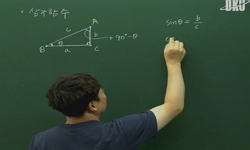The major sources of energy dissipation in steel frames with partially restrained (PR) connections are evaluated. Available experimental results are used to verify the mathematical model used in this study. The verified model is then used to quantify ...
http://chineseinput.net/에서 pinyin(병음)방식으로 중국어를 변환할 수 있습니다.
변환된 중국어를 복사하여 사용하시면 됩니다.
- 中文 을 입력하시려면 zhongwen을 입력하시고 space를누르시면됩니다.
- 北京 을 입력하시려면 beijing을 입력하시고 space를 누르시면 됩니다.
https://www.riss.kr/link?id=A105651036
- 저자
- 발행기관
- 학술지명
- 권호사항
-
발행연도
2000
-
작성언어
English
- 주제어
-
등재정보
SCIE,SCOPUS
-
자료형태
학술저널
-
수록면
241-256(16쪽)
- 제공처
-
0
상세조회 -
0
다운로드
부가정보
다국어 초록 (Multilingual Abstract)
The major sources of energy dissipation in steel frames with partially restrained (PR) connections are evaluated. Available experimental results are used to verify the mathematical model used in this study. The verified model is then used to quantify the energy dissipation in PR connections due to hysteretic behavior, due to viscous damping and at plastic hinges if they are formed. Observations are made for two load conditions: a sinusoidal load applied at the top of the frame, and a sinusoidal ground acceleration applied at the base of the frame representing a seismic loading condition. This analytical study confirms the general behavior, observed during experimental investigations, that PR connections reduce the overall stiffness of frames, but add a major source of energy dissipation. As the connections become stiffer, the contribution of PR connections in dissipating energy becomes less significant. A connection with a T ratio (representing its stiffness) of at least 0.9 should not be considered as fully restrained as is commonly assumed, since the energy dissipation characteristics are different. The flexibility of PR connections alters the fundamental frequency of the frame. Depending on the situation, it may bring the frame closer to or further from the resonance condition. If the frame approaches the resonance condition, the effect of damping is expected to be very important. However, if the frame moves away from the resonance condition, the energy dissipation at the PR connections is expected to be significant with an increase in the deformation of the frame, particularly for low damping values. For low damping values, the dissipation of energy at plastic hinges is comparable to that due to viscous damping, and increases as the frame approaches failure. For the range of parameters considered in this study, the energy dissipations at the PR connections and at the plastic hinges are of the same order of magnitude. The study quantitatively confirms the general observations made in experimental investigations for steel frames with PR connections; however, proper consideration of the stiffness of PR connections and other dynamic properties is essential in predicting the dynamic behavior.
동일학술지(권/호) 다른 논문
-
Application of return mapping technique to multiple hardening concrete model
- Techno-Press
- Lam, S.S. Eddie
- 2000
- SCIE,SCOPUS
-
Optimal damping ratio of TLCDs
- Techno-Press
- Chen, Yung-Hsiang
- 2000
- SCIE,SCOPUS
-
A review of seismic design recommendations in Jordan
- Techno-Press
- Saffarini, Hassan S.
- 2000
- SCIE,SCOPUS
-
Exact solutions for free vibration of multi-step orthotropic shear plates
- Techno-Press
- Li, Q.S.
- 2000
- SCIE,SCOPUS






 ScienceON
ScienceON


